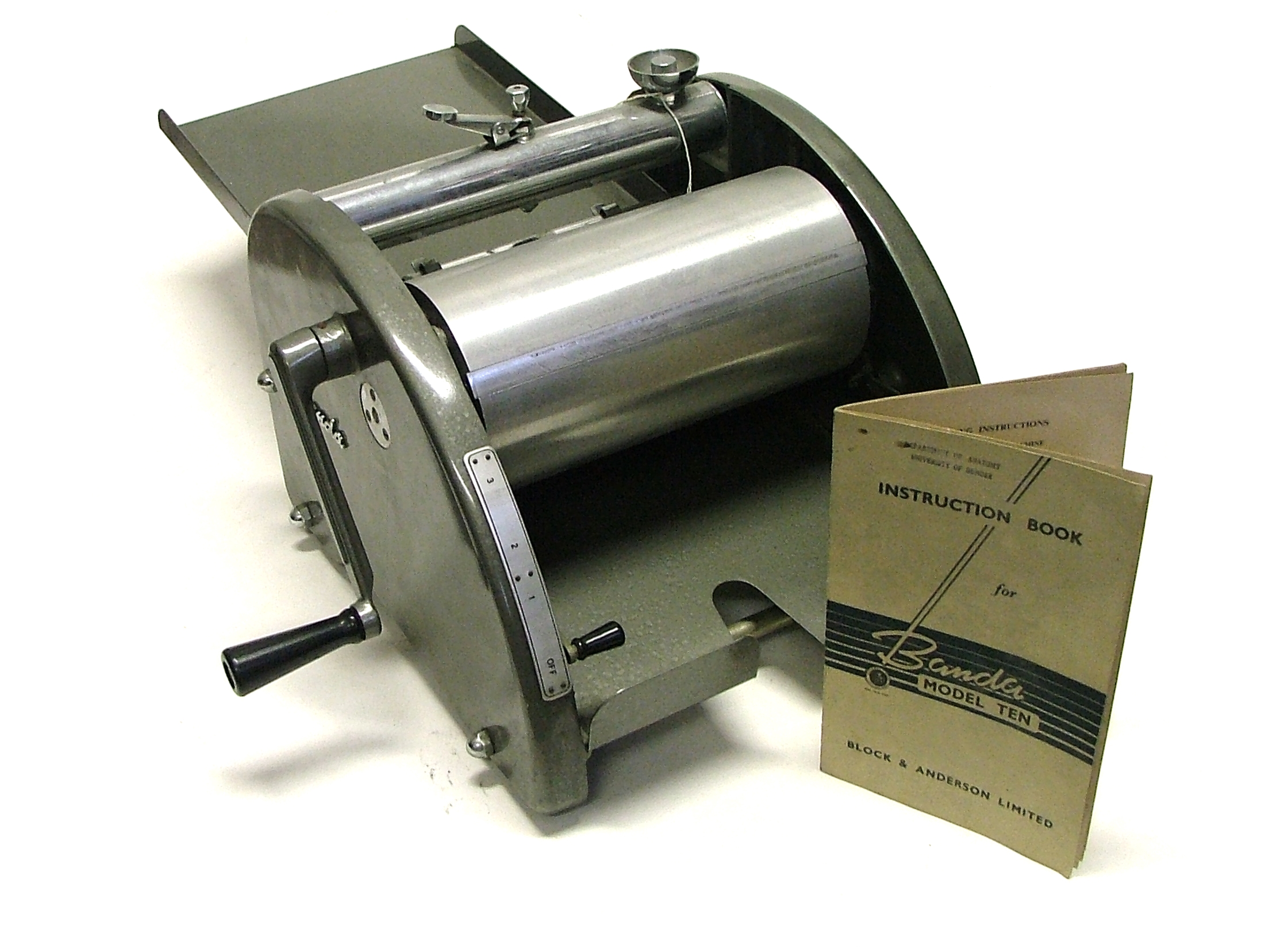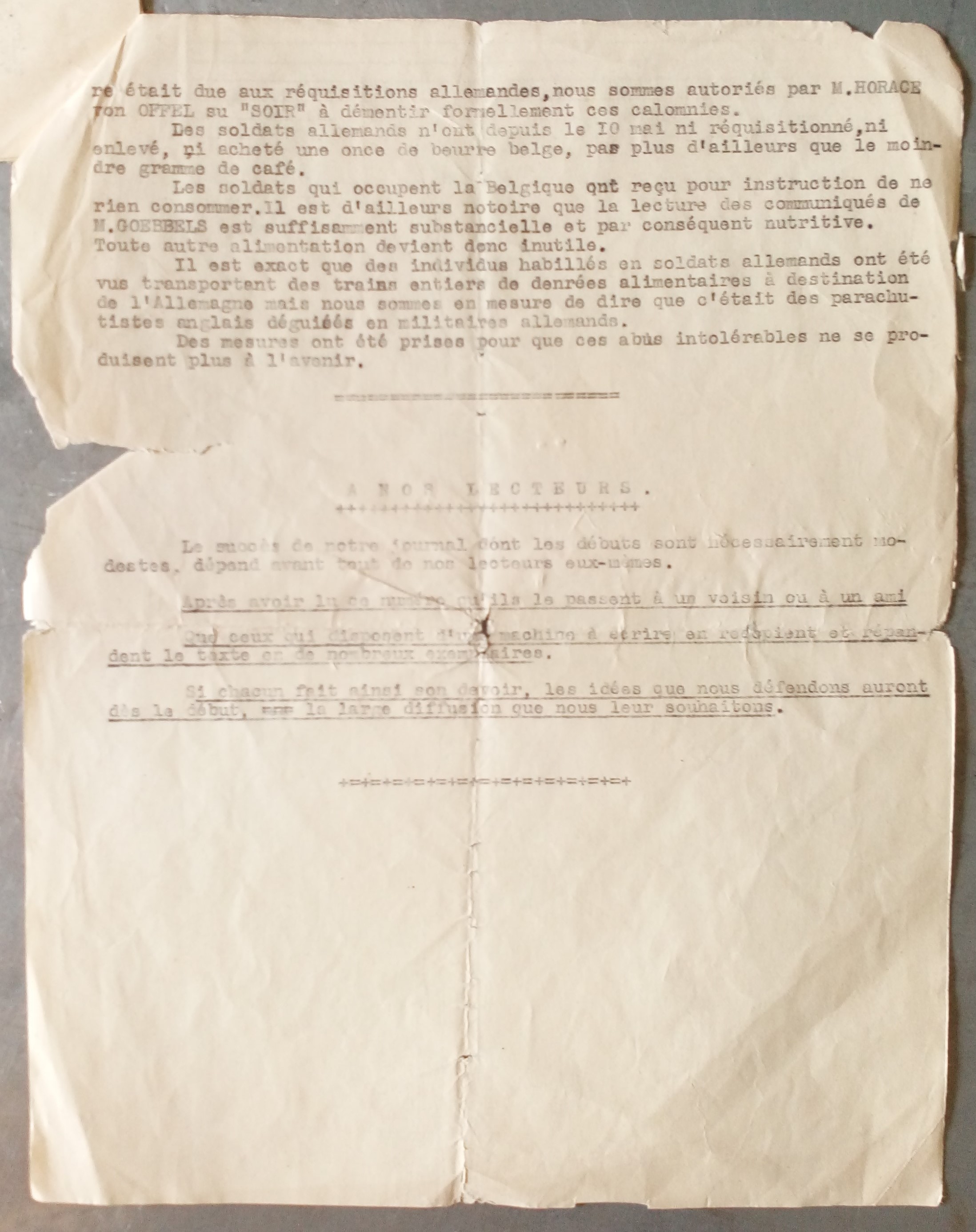|
Carbonless Copy Paper
Carbonless copy paper (CCP), also known as non-carbon copy paper or NCR paper ('no carbon required'—a backronym derived from its creator, National Cash Register), is a type of coated paper designed to transfer information written on the top sheet to the sheets beneath. It was developed by chemists Lowell Schleicher and Barry Green, as an alternative to carbon paper and is sometimes misidentified as such. Carbonless copying provides an alternative to the use of carbon copying. Carbonless copy paper has micro-encapsulated dye or ink on the back side of the top sheet, and a clay coating on the front side of the bottom sheet. When pressure is applied (from writing or impact printing), the dye capsules rupture and react with the clay to duplicate the markings made to the top sheet. Intermediary sheets, with clay on the front and dye capsules on the back, can be used to create multiple copies; this may be referred to as multipart stationery. Operation Carbonless copy paper consis ... [...More Info...] [...Related Items...] OR: [Wikipedia] [Google] [Baidu] |
Bisphenol A
Bisphenol A (BPA) is a chemical compound primarily used in the manufacturing of various plastics. It is a colourless solid which is Solubility, soluble in most common organic solvents, but has very poor solubility in water. BPA is produced on an industrial scale by the condensation reaction of phenol and acetone. Global production in 2022 was estimated to be in the region of 10 million tonnes. BPA's largest single application is as a co-monomer in the production of polycarbonates, which accounts for 65–70% of all BPA production. The manufacturing of epoxy resins and vinyl ester resins account for 25–30% of BPA use. The remaining 5% is used as a major component of several high-performance plastics, and as a minor additive in polyvinyl chloride (PVC), polyurethane, thermal paper, and several other materials. It is not a plasticizer, although it is often wrongly labelled as such. The health effects of BPA have been the subject of prolonged public and scientific debate. BPA is ... [...More Info...] [...Related Items...] OR: [Wikipedia] [Google] [Baidu] |
Chemical Hazards
Chemical hazards are hazards present in hazardous chemicals and hazardous materials. Exposure to certain chemicals can cause acute or long-term adverse health effects. Chemical hazards are usually classified separately from biological hazards (biohazards). Chemical hazards are classified into groups that include asphyxiants, corrosives, irritants, sensitizers, carcinogens, mutagens, teratogens, reactants, and flammables. In the workplace, exposure to chemical hazards is a type of occupational hazard. The use of personal protective equipment may substantially reduce the risk of adverse health effects from contact with hazardous materials. Long-term exposure to chemical hazards such as silica dust, engine exhausts, tobacco smoke, and lead (among others) have been shown to increase risk of heart disease, stroke, and high blood pressure. Types of chemical hazard Routes of exposure The most common exposure route to chemicals in the work environment is through inhalation. G ... [...More Info...] [...Related Items...] OR: [Wikipedia] [Google] [Baidu] |
Paper
Paper is a thin sheet material produced by mechanically or chemically processing cellulose fibres derived from wood, Textile, rags, poaceae, grasses, Feces#Other uses, herbivore dung, or other vegetable sources in water. Once the water is drained through a fine mesh leaving the fibre evenly distributed on the surface, it can be pressed and dried. The papermaking process developed in east Asia, probably China, at least as early as 105 Common Era, CE, by the Han Dynasty, Han court eunuch Cai Lun, although the earliest archaeological fragments of paper derive from the 2nd century BCE in China. Although paper was originally made in single sheets by hand, today it is mass-produced on large machines—some making reels 10 metres wide, running at 2,000 metres per minute and up to 600,000 tonnes a year. It is a versatile material with many uses, including printing, painting, graphics, signage, design, packaging, decorating, writing, and Housekeeping, cleaning. It may also be used a ... [...More Info...] [...Related Items...] OR: [Wikipedia] [Google] [Baidu] |
Coated Paper
Coated paper (also known as enamel paper, gloss paper, and thin paper) is paper that has been coated with a mixture of materials or a polymer to impart certain qualities to the paper, including weight, surface gloss, smoothness, or reduced ink absorbency. Various materials, including kaolinite, calcium carbonate, bentonite, and talc, can be used to coat paper for high-quality printing, such as that used in the packaging industry and in magazines. The chalk or china clay is bound to the paper with synthetic s, such as styrene-butadiene latexes and natural organic binders such as starch. The coating formulation may also contain chemical additives as dispersants, resins, or polyethylene to give water resistance and wet strength to the paper, or to protect against ultraviolet radiation. Coated papers have been traditionally used for printing magazines. Varieties Machine-finished coated paper ''Machine-finished coated paper'' (MFC) has a basis weight of 48–80 g/m2. Th ... [...More Info...] [...Related Items...] OR: [Wikipedia] [Google] [Baidu] |
National Institute For Occupational Safety And Health
The National Institute for Occupational Safety and Health (NIOSH, ) is the List of United States federal agencies, United States federal agency responsible for conducting research and making recommendations for the prevention of work-related occupational injury, injury, occupational disease, illness, disability, and occupational fatality, death. Its functions include gathering information, conducting scientific research both in the laboratory and in the field, and translating the knowledge gained into products and services.About NIOSH National Institute for Occupational Safety and Health. Among NIOSH's programs are determination of recommended exposure limits for toxic chemicals and other hazards, field research such as the Health Hazard Evaluation Program, epidemiology and health surveillance programs such as the National Firefighter Re ... [...More Info...] [...Related Items...] OR: [Wikipedia] [Google] [Baidu] |
List Of Duplicating Processes
This is a partial list of text and image duplicating processes used in business and government from the Industrial Revolution forward. Some are mechanical and some are chemical. There is naturally some overlap with printing processes and photographic processes, but the challenge of precisely duplicating business letters, forms, contracts, and other paperwork prompted some unique solutions as well. There were many short-lived inventions along the way. Duplicating processes ''Within each type, the methods are arranged in very rough chronological order.'' * Methods of copying handwritten letters ** Manifold stylographic writer, using early "carbonic paper" ** Letter copying book process *Mechanical processes ** Tracing to make accurate hand-drawn copies **Pantograph, manual device for making drawn copies without tracing, can also enlarge or reduce *Printmaking, which includes engraving and etching ** Relief printing including woodcut **Intaglio (printmaking) or copperplate engra ... [...More Info...] [...Related Items...] OR: [Wikipedia] [Google] [Baidu] |
Spirit Duplicator
A spirit duplicator (also Rexograph and Ditto machine in North America, Banda machine and Fordigraph machine in the U.K. and Australia) is a printing method invented in 1923 by Wilhelm Ritzerfeld, which was used for most of the 20th century. The term "spirit duplicator" refers to the alcohols that were the principal solvents used in generating copies. Spirit duplicators were used mainly by schools, churches, clubs, and other small organizations, such as in the production of fanzines, because of the limited number of copies one could make from an original, along with the low cost (and corresponding low quality) of copying. The spirit duplicator coexisted alongside the mimeograph and the hectograph, devices with a similar purpose but different operation. History The spirit duplicator was invented in 1923 by Wilhelm Ritzerfeld. The best-known manufacturer in the United States and the world was Ditto Corporation of Illinois. Copiers in the United Kingdom were commonly manufact ... [...More Info...] [...Related Items...] OR: [Wikipedia] [Google] [Baidu] |
Carbon Paper
Carbon paper (originally carbonic paper) consists of sheets of paper that create one or more copies simultaneously with the creation of an original document when inscribed by a typewriter or ballpoint pen. The email term cc which means "carbon copy" is derived from this use of carbon paper. History In 1801, Pellegrino Turri, an Italian inventor, invented carbon paper to provide the ink for his mechanical typing machine, one of the first typewriters. Ralph Wedgwood obtained the first patent for carbon paper in 1806. Carbon paper in its original form was paper coated on one side with a layer of a loosely bound dry ink or pigmented coating, bound with wax. The manufacture of carbon paper was formerly the largest consumer of montan wax. In 1954 the Columbia Ribbon & Carbon Manufacturing Company filed a patent for what became known in the trade as solvent carbon paper: the coating was changed from wax-based to polymer-based. The manufacturing process changed from a hot-melt ... [...More Info...] [...Related Items...] OR: [Wikipedia] [Google] [Baidu] |
Carbon Copy
Before the development of photographic copiers, a carbon copy was the under-copy of a typed or written document placed over carbon paper and the under-copy sheet itself (not to be confused with the carbon print family of photographic reproduction processes). When copies of business letters were so produced, it was customary to use the acronym "CC" or "cc" before a colon and below the writer's signature to inform the principal recipient that carbon copies had been made and distributed to the parties listed after the colon. With the advent of word processors and e-mail, "cc" is used as a merely formal indication of the distribution of letters to secondary recipients. Process A sheet of carbon paper is placed between two or more sheets of paper. The pressure applied by the writing implement (pen, pencil, typewriter or impact printer) to the top sheet causes pigment from the carbon paper to reproduce the similar mark on the copy sheet(s). More than one copy can be made by stac ... [...More Info...] [...Related Items...] OR: [Wikipedia] [Google] [Baidu] |
Endocrine Disruptor
Endocrine disruptors, sometimes also referred to as hormonally active agents, endocrine disrupting chemicals, or endocrine disrupting compounds are chemicals that can interfere with endocrine (or hormonal) systems. These disruptions can cause numerous adverse human health outcomes, including alterations in sperm quality and fertility; abnormalities in sex organs‚ endometriosis‚ early puberty‚ altered nervous system or immune function; certain cancers; respiratory problems; metabolic issues; diabetes, obesity, or cardiovascular problems; growth, neurological and learning disabilities, and more. Found in many household and industrial products, endocrine disruptors "interfere with the synthesis, secretion, transport, binding, action, or elimination of natural hormones in the body that are responsible for development, behavior, fertility, and maintenance of homeostasis (normal cell metabolism)." Any system in the body controlled by hormones can be derailed by hormone disrupt ... [...More Info...] [...Related Items...] OR: [Wikipedia] [Google] [Baidu] |
Volatile Organic Compound
Volatile organic compounds (VOCs) are organic compounds that have a high vapor pressure at room temperature. They are common and exist in a variety of settings and products, not limited to Indoor mold, house mold, Upholstery, upholstered furniture, Handicraft, arts and crafts supplies, Dry cleaning, dry cleaned clothing, and Cleaning agent, cleaning supplies. VOCs are responsible for the odor of scents and perfumes as well as pollutants. They play an important role in communication between animals and plants, such as attractants for pollinators, protection from predation, and even inter-plant interactions. Some VOCs are dangerous to human health or cause harm to the natural environment, environment, often despite the odor being perceived as pleasant, such as "new car smell". Human impact on the environment, Anthropogenic VOCs are regulated by law, especially indoors, where concentrations are the highest. Most VOCs are not acutely toxic, but may have long-term chronic health effect ... [...More Info...] [...Related Items...] OR: [Wikipedia] [Google] [Baidu] |








